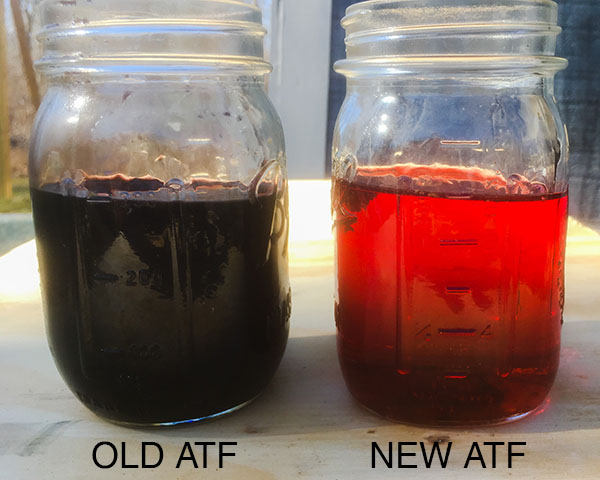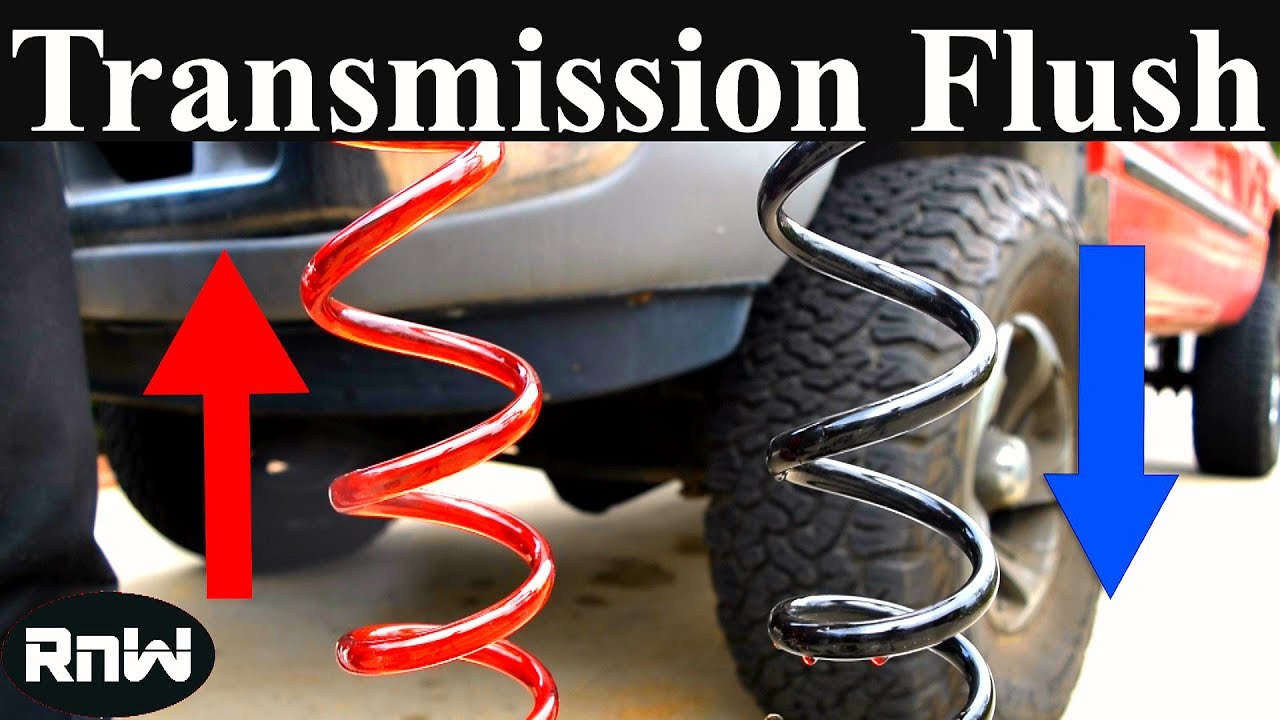Can I Flush My Transmission Fluid Myself
Yes, you can flush your transmission fluid yourself. Flushing the transmission fluid is a task that can be done by DIY enthusiasts to maintain the performance and longevity of their vehicle’s transmission system.
Importance Of Regular Transmission Fluid Maintenance
The importance of regular transmission fluid maintenance cannot be overstated. Proper maintenance of the transmission fluid is crucial for the longevity of the transmission system. Regularly flushing the transmission fluid helps to remove dirt, debris, and contaminants that can accumulate over time, preventing them from causing damage to the system. The transmission fluid also helps to cool and lubricate the moving parts of the transmission, ensuring smooth and efficient operation. By maintaining clean and healthy transmission fluid, you can prevent costly repairs and extend the lifespan of your transmission. It is recommended to consult your vehicle’s manufacturer guidelines for the recommended interval of transmission fluid maintenance.
Can I Flush My Transmission Fluid Myself?
Flushing your transmission fluid can help maintain the efficiency and performance of your vehicle’s transmission system. Many people wonder if they can perform this task themselves instead of taking it to a professional. There are several benefits to doing a DIY transmission fluid flush, including cost savings and convenience. One of the main benefits of a DIY transmission fluid flush is saving money. When you take your vehicle to a mechanic or dealership, you often have to pay for their labor and additional fees. By doing it yourself, you can avoid these unnecessary expenses and only pay for the fluid and any necessary tools or equipment. Another advantage is the convenience of being able to do it on your own time. You don’t have to make an appointment or wait for your vehicle to be serviced. You have full control over the process and can complete it at your own pace. However, before attempting a DIY transmission fluid flush, there are a few factors to consider. Firstly, you should carefully read your vehicle’s owner manual to understand the specific requirements and recommendations for your model. Additionally, make sure you have the necessary tools and equipment for the task. Lastly, consider your own level of mechanical skill and comfort with performing maintenance tasks on your vehicle. In conclusion, a DIY transmission fluid flush can be a cost-effective and convenient option. Just be sure to consider the factors mentioned above before attempting it yourself.
Steps Involved In Flushing Transmission Fluid
Flushing your transmission fluid can be done yourself, saving you time and money. Before starting the process, gather the necessary equipment, such as a wrench, drain pan, and transmission fluid. To prepare your vehicle, park on a level surface and engage the emergency brake. Locate the transmission fluid dipstick and remove it. Start the engine and let it warm up. Put the vehicle in neutral or park and ensure the engine is running. Place the drain pan under the transmission and remove the drain plug or loosening the transmission pan bolts. Allow the old fluid to drain completely. Replace the drain plug or tighten the pan bolts and clean any residual fluid. Add the appropriate amount of new transmission fluid. Run the engine again and shift through each gear, allowing the fluid to circulate. Check the fluid level using the dipstick and add more if necessary. You have now successfully flushed your transmission fluid!
Signs That Indicate The Need For A Transmission Fluid Flush
If you are experiencing strange noises or grinding sensations while shifting gears, it may be a sign that your transmission fluid needs to be flushed. Another indication is if you notice slipping or delayed shifting when driving. This could be a result of contaminated or worn-out fluid that is not providing proper lubrication and pressure. Additionally, a burnt smell or discolored fluid could signify that the fluid has overheated and is no longer effective in protecting your transmission. If you observe any of these signs, it is important to address the issue promptly by flushing your transmission fluid. Performing this task yourself can be a cost-effective solution, but it requires some basic knowledge and the right tools. Always refer to your vehicle’s owner’s manual for proper procedures and safety precautions.
Common Mistakes To Avoid During A Diy Transmission Fluid Flush
Common Mistakes to Avoid During a DIY Transmission Fluid Flush:
- Overfilling or underfilling the transmission: It’s crucial to follow the recommended fluid level stated in your vehicle’s owner manual. Overfilling can cause the fluid to foam, leading to erratic shifting and potentially damaging the transmission. Underfilling can result in inadequate lubrication and overheating.
- Using the wrong type of fluid: Each vehicle requires a specific type of transmission fluid. Using the wrong fluid can negatively impact the transmission’s performance and longevity. Always consult the owner’s manual or a trusted mechanic to determine the correct fluid type.
- Not properly disposing of the old fluid: Transmission fluid contains harmful chemicals and pollutants. It’s essential to dispose of the old fluid responsibly, following local regulations. Improper disposal can harm the environment, contaminating groundwater and affecting ecosystems.

Credit: blog.amsoil.com
Understanding The Different Types Of Transmission Fluids
Understanding the different types of transmission fluids is crucial when considering whether you can flush your transmission fluid yourself. One important distinction to be aware of is between conventional ATF and synthetic ATF. Conventional ATF is made from petroleum-based oils and contains additives to improve its performance. Synthetic ATF, on the other hand, is formulated using chemical compounds and is designed to provide superior protection and performance.
When it comes to compatibility with your vehicle’s specifications, it is important to consult your vehicle’s owner’s manual or contact the manufacturer directly for guidance. They will be able to advise you on which type of transmission fluid is recommended for your specific make and model. Using the wrong type of fluid can cause damage to your transmission and void any warranty you may have.
Seeking Professional Help For Transmission Fluid Maintenance
Seeking Professional Help for Transmission Fluid Maintenance
When it comes to maintaining the health of your transmission, seeking professional help for transmission fluid maintenance is highly recommended. Professional transmission flush services offer numerous benefits that can extend the lifespan of your transmission and prevent costly repairs down the road.
Benefits of Professional Transmission Flush Services:
- Expertise: Reputable service providers have experienced technicians with the knowledge and skills to perform a thorough transmission flush.
- Quality Equipment: Professionals use advanced equipment specifically designed for flushing transmission fluid, ensuring optimal results.
- Proper Fluid Disposal: A reputable service provider will dispose of the old transmission fluid responsibly, adhering to environmental regulations.
- Efficiency: Professional transmission flush services are efficient and time-saving, allowing you to get back on the road quickly.
- Peace of Mind: By entrusting your transmission fluid maintenance to professionals, you can have confidence in the quality of the service provided.
How to Choose a Reputable Service Provider:
When choosing a service provider for your transmission fluid maintenance, it’s essential to consider the following factors:
- Read Reviews: Look for online reviews and testimonials from previous customers to gauge the reputation and reliability of the service provider.
- Certifications and Training: Check if the technicians are certified and receive regular training to stay updated with the latest technologies and techniques.
- Warranty: Inquire about any warranties offered by the service provider to ensure you are protected in case of any issues.
- Price: While price is important, prioritize quality and expertise over the cheapest option to avoid potential complications.
- Ask for Recommendations: Seek recommendations from friends, family, or trusted mechanics who may have previously used a reliable transmission flush service.
By following these guidelines, you can make an informed decision and choose a reputable service provider for your transmission fluid maintenance needs.
Frequently Asked Questions Of Can I Flush My Transmission Fluid Myself
Can I Flush My Transmission Fluid Myself?
Flushing your transmission fluid yourself is possible, but it’s recommended to leave this task to professionals. Transmission fluid flush requires specialized equipment and knowledge to ensure it’s done correctly. Improper flushing can cause damage to your transmission, so it’s best to trust the experts for this job.
What Are The Risks Of Flushing My Transmission Fluid Myself?
Attempting to flush your transmission fluid yourself carries certain risks. Without the proper equipment and expertise, you may not be able to fully flush the old fluid from your transmission. This can lead to contamination and potential damage to your transmission, resulting in costly repairs.
It’s best to consult a professional for this task.
How Often Should I Flush My Transmission Fluid?
The frequency of transmission fluid flushes depends on your vehicle’s manufacturer recommendations. Generally, it’s recommended to flush your transmission fluid every 30,000 to 60,000 miles or every 2-4 years. However, if you frequently engage in towing or drive in severe conditions, you may need more frequent flushes.
Consult your vehicle’s manual or a professional for guidance.
What Are The Signs That My Transmission Fluid Needs To Be Flushed?
Several signs indicate that your transmission fluid needs to be flushed. These include a burnt odor, discolored fluid, rough shifting, slipping gears, or transmission overheating. If you notice any of these signs, it’s essential to have your transmission fluid checked and flushed by a professional to prevent potential damage to your transmission.
Conclusion
Flushing your transmission fluid by yourself is possible and can save you money. However, it is crucial to have the necessary knowledge and tools to ensure a proper and safe procedure. Following the guidelines provided and consulting a professional if needed will help you maintain the performance and longevity of your vehicle.
Remember to regularly maintain your transmission fluid to avoid any potential issues down the line.
